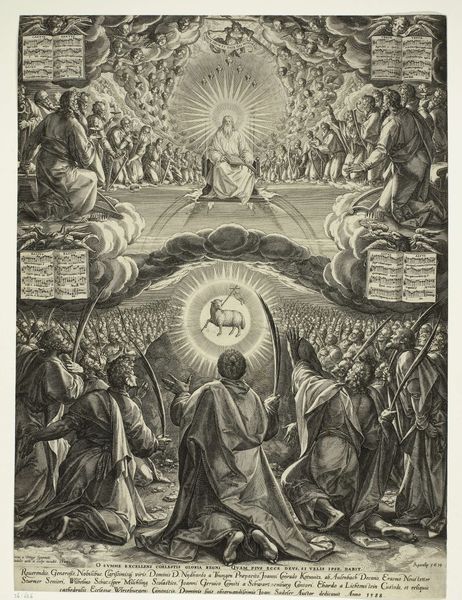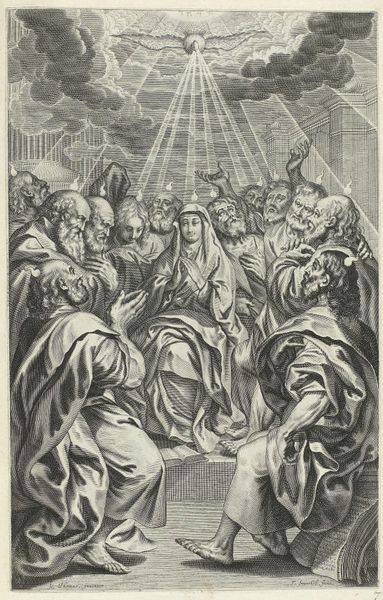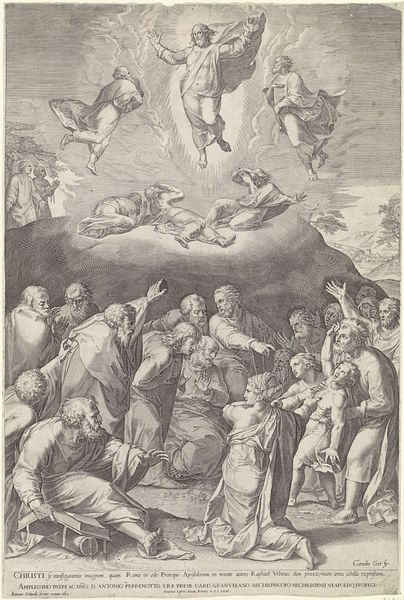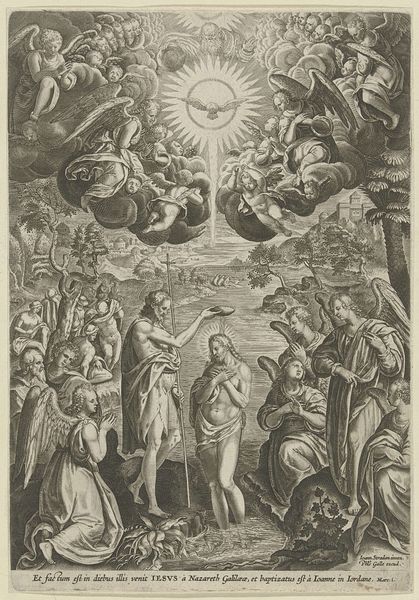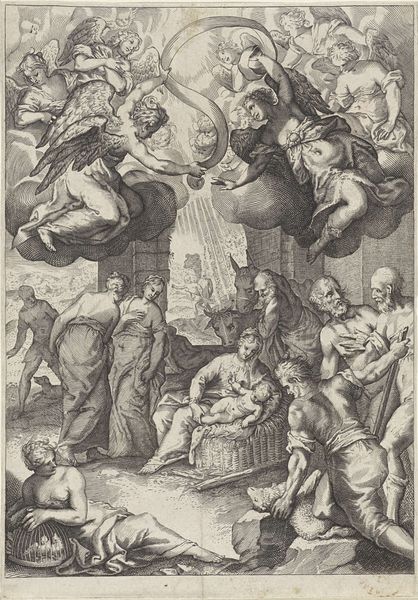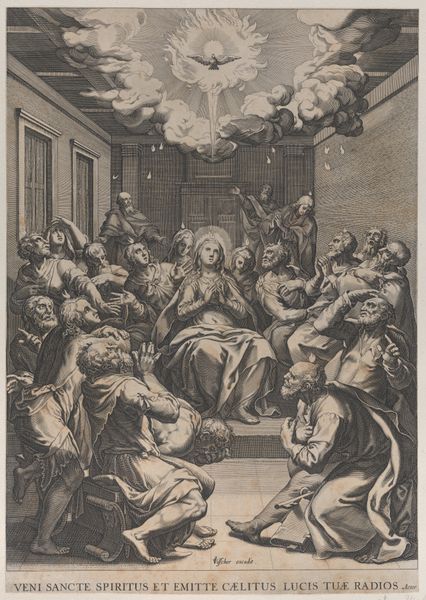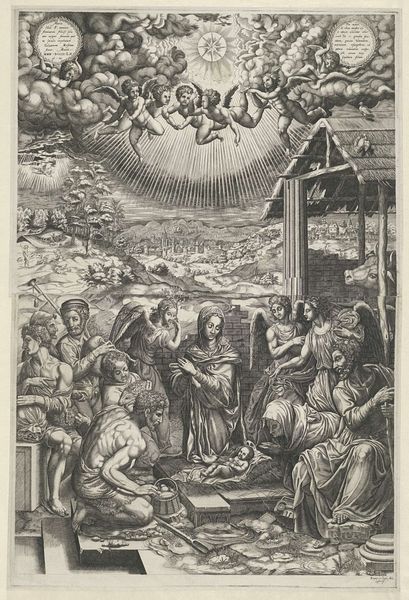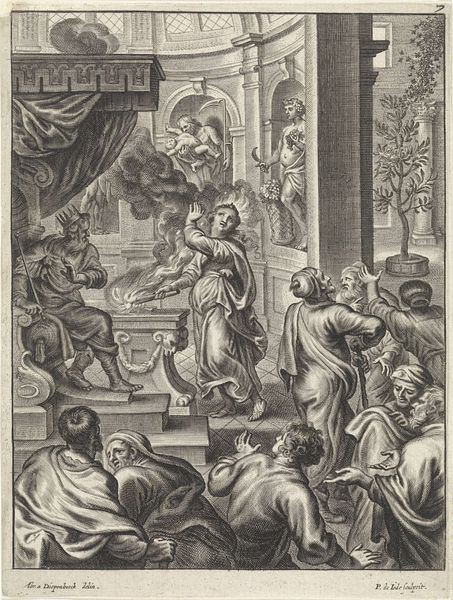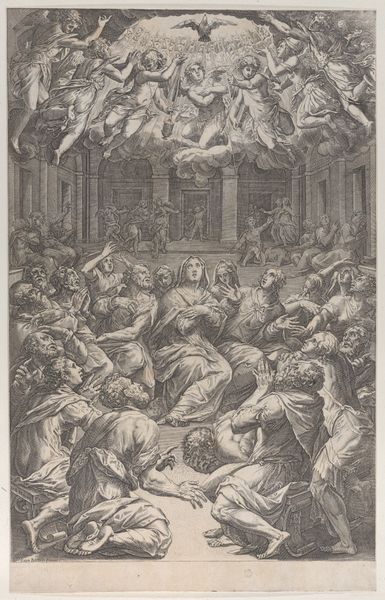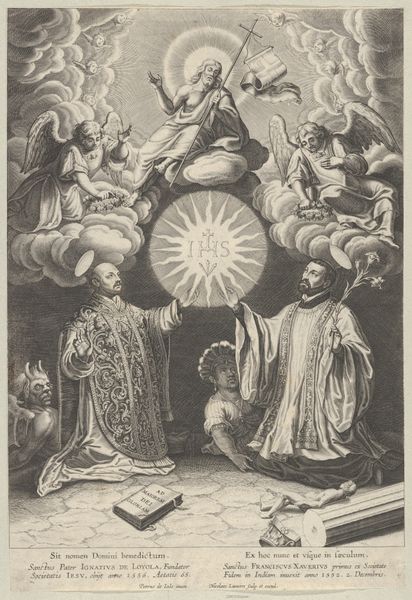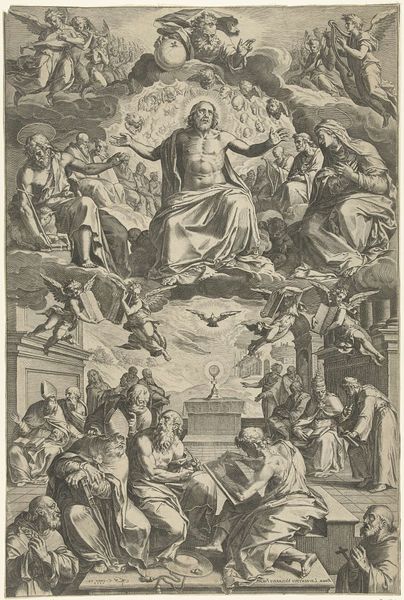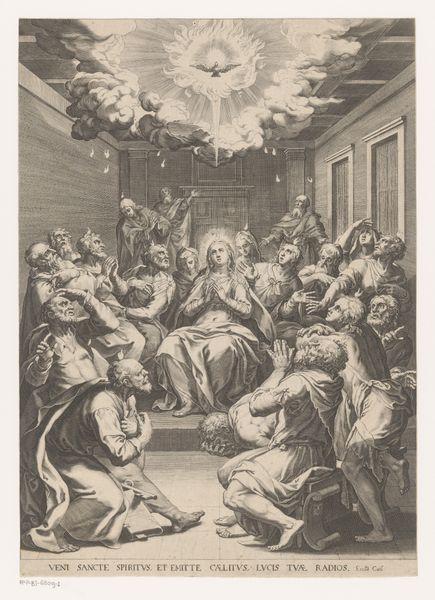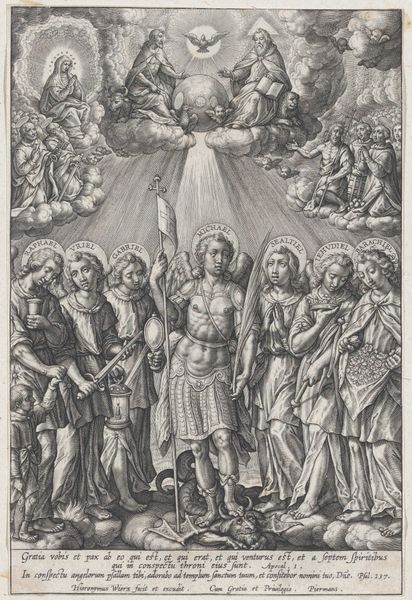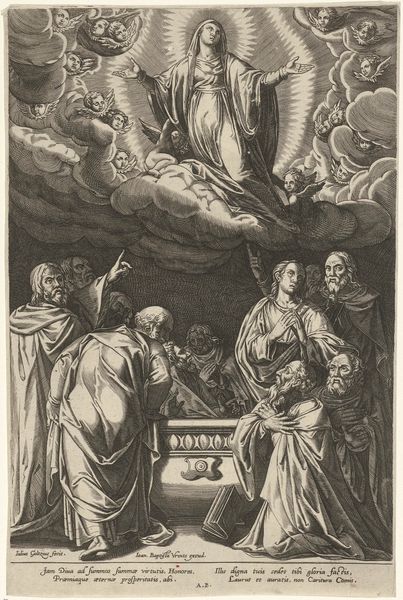
#
comic strip sketch
#
pen drawing
#
mechanical pen drawing
#
pen illustration
#
pen sketch
#
old engraving style
#
junji ito style
#
linework heavy
#
pen-ink sketch
#
pen work
Dimensions: height 398 mm, width 288 mm
Copyright: Rijks Museum: Open Domain
Curator: Look at this intriguing work by Jacob van der Heyden, titled "Uitstorting van de Heilige Geest", made in 1618. Editor: My initial impression? Overwhelming! There's so much visual information packed into this composition, an almost frantic energy radiating from the crowd below. Curator: It's an engraving, a labor-intensive process involving meticulous carving into a metal plate to create the design. Think about the skill and time commitment necessary to achieve such detail, all those precisely placed lines to render form and texture. The act of printing makes multiples, it enables to dissemination to a wider public, quite unique for its time. Editor: Indeed! And let's consider what it disseminates. The imagery here is classic Pentecost. We see the Virgin Mary and the Apostles receiving the Holy Spirit, represented by the descending dove at the top, bathed in divine light and accompanied by angels. Note the flames above each figure—a potent symbol of spiritual awakening and divine inspiration. The upper scene shows a kind of prelude. Curator: What interests me is that printing meant also relying on printmakers' shops for the reproduction of the image, who would make a crucial work out of distributing images to the crowds as if mass production had already occurred, with the work also made by many individuals besides the author. It reveals the collaborative nature of the image-making process back then. Editor: You’re right to point that out. Thinking symbolically, notice how van der Heyden positions Mary centrally, drawing our eye directly to her calm amidst the disciples' apparent rapture and confusion. Her passivity compared to their dramatic gestures becomes a strong symbol of steadfast faith, despite what unfolds around her, of course, not without that element of the communal frenzy during this miraculous scene! Curator: It prompts questions about who the work was aimed at, maybe the people depicted? A study of engravings from this period can expose complex relationships of labor, workshop practice and skill exchange. Was it accessible to working people at the time or made only for wealthier circles? Editor: Interesting considerations. I wonder about the conscious visual references Van der Heyden draws from earlier artistic traditions to amplify his message, perhaps solidifying connections in cultural memory for the viewer in the 17th Century. Curator: Investigating that wider sphere and thinking through those avenues would truly unveil new appreciation for Van der Heyden's artwork as a process involving social exchange. Editor: Agreed. Peeling back the layers of imagery and craft, each offering fresh understanding.
Comments
No comments
Be the first to comment and join the conversation on the ultimate creative platform.
